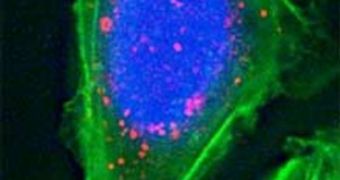The Cambridge, Massachusetts-based BIND Biosciences, a start-up, is currently working on a new method of creating nanoparticle-enclosed drugs, which have, in test trials, proven to be extremely effective at destroying cancer cells in tumors. In charge of the work is head of process development, Greg Troiano, who oversees a number of research tools, including the vats and tubes that make the nanostructures. He is optimistic that the design would reduce the side-effects of chemotherapy, while at the same time increasing the local effectiveness of the drugs, Technology Review reports.
In addition to being filled with cancer drugs, the nanoparticles are coated with a layer of proteins that is very accurate at identifying tumors and at binding to them. The active ingredients in the small structures are released only when this happens, which avoids instances when drugs are spilled all over the bloodstream, which is often the case with chemo. In their experiments on lab rats, researchers at BIND determined that prostate, breast and lung tumors could be successfully prevented from spreading by using the new method.
Another innovation that BIND set in place is the fact that its drug-delivery system-coating complex can survive in the harsh conditions of the human bloodstream for up to a day. This ability significantly increases the chances of the particles of actually getting to the tumors. Other such systems only last for 10 or 15 hours, and, naturally, have a smaller chance of reaching their targeted destinations. Starting 2010, the team has plans to begin human test trials, and is therefore working around the clock to produce sufficient amounts of their nanoparticles to have until experiments conclude.
The path the company uses for its systems is derived from the work that professor of chemical engineering, Robert Langer, a biomaterials research pioneer, conducted at the Massachusetts Institute of Technology (MIT). Langer started BIND in 2006, together with Harvard Medical School scientist and physician Omid Farokhzad, who was one of his former postdoctoral students. “The idea of using nanoparticles is to lower the dose while maintaining efficacy and reducing side effects,” National Cancer Institute (NCI) Nanotechnology for Cancer Program director Piotr Grodzinski, MD, says.

 14 DAY TRIAL //
14 DAY TRIAL //